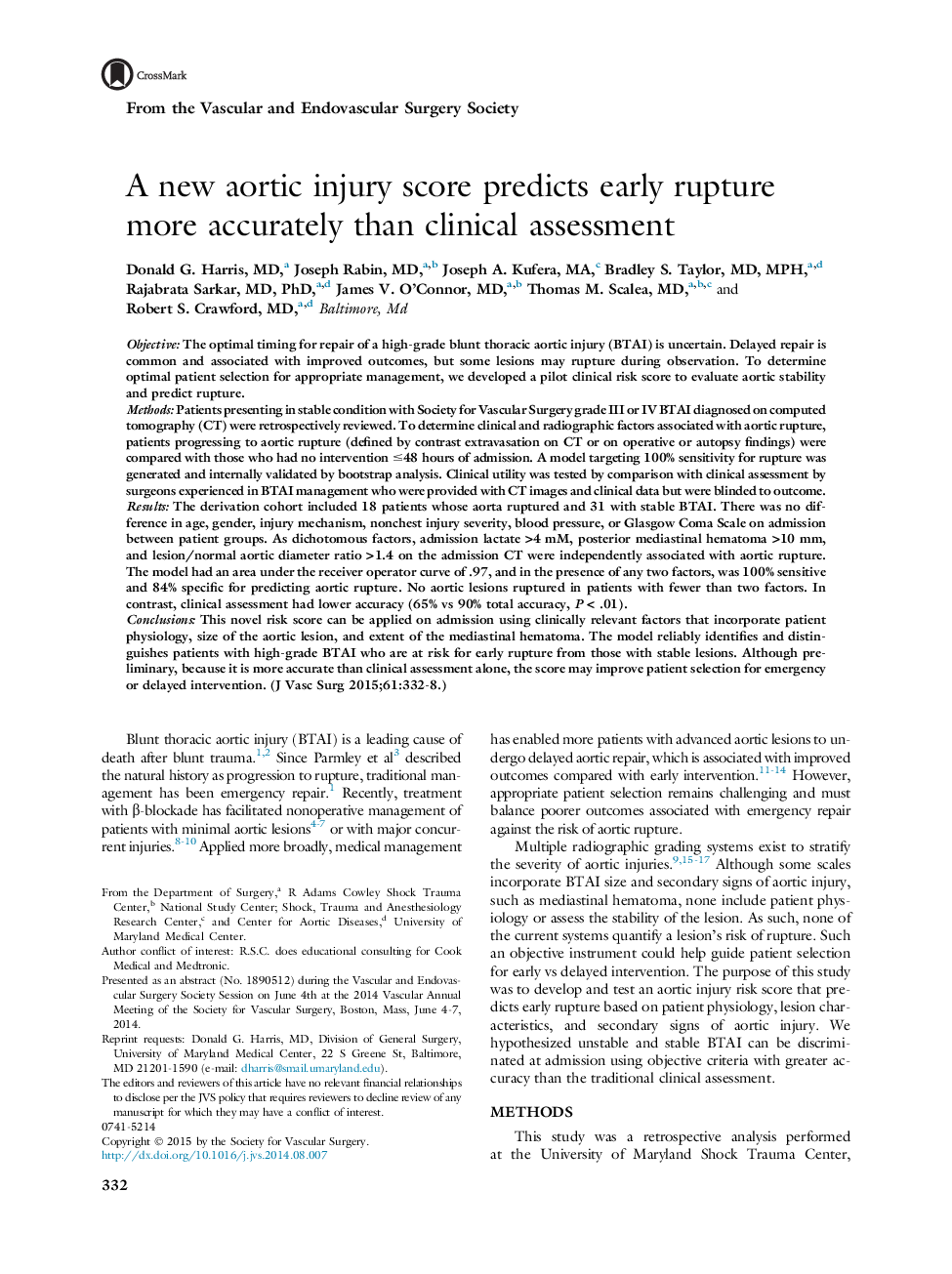| کد مقاله | کد نشریه | سال انتشار | مقاله انگلیسی | نسخه تمام متن |
|---|---|---|---|---|
| 5993524 | 1179817 | 2015 | 7 صفحه PDF | دانلود رایگان |
ObjectiveThe optimal timing for repair of a high-grade blunt thoracic aortic injury (BTAI) is uncertain. Delayed repair is common and associated with improved outcomes, but some lesions may rupture during observation. To determine optimal patient selection for appropriate management, we developed a pilot clinical risk score to evaluate aortic stability and predict rupture.MethodsPatients presenting in stable condition with Society for Vascular Surgery grade III or IV BTAI diagnosed on computed tomography (CT) were retrospectively reviewed. To determine clinical and radiographic factors associated with aortic rupture, patients progressing to aortic rupture (defined by contrast extravasation on CT or on operative or autopsy findings) were compared with those who had no intervention â¤48 hours of admission. A model targeting 100% sensitivity for rupture was generated and internally validated by bootstrap analysis. Clinical utility was tested by comparison with clinical assessment by surgeons experienced in BTAI management who were provided with CT images and clinical data but were blinded to outcome.ResultsThe derivation cohort included 18 patients whose aorta ruptured and 31 with stable BTAI. There was no difference in age, gender, injury mechanism, nonchest injury severity, blood pressure, or Glasgow Coma Scale on admission between patient groups. As dichotomous factors, admission lactate >4 mM, posterior mediastinal hematoma >10 mm, and lesion/normal aortic diameter ratio >1.4 on the admission CT were independently associated with aortic rupture. The model had an area under the receiver operator curve of .97, and in the presence of any two factors, was 100% sensitive and 84% specific for predicting aortic rupture. No aortic lesions ruptured in patients with fewer than two factors. In contrast, clinical assessment had lower accuracy (65% vs 90% total accuracy, P < .01).ConclusionsThis novel risk score can be applied on admission using clinically relevant factors that incorporate patient physiology, size of the aortic lesion, and extent of the mediastinal hematoma. The model reliably identifies and distinguishes patients with high-grade BTAI who are at risk for early rupture from those with stable lesions. Although preliminary, because it is more accurate than clinical assessment alone, the score may improve patient selection for emergency or delayed intervention.
Journal: Journal of Vascular Surgery - Volume 61, Issue 2, February 2015, Pages 332-338
